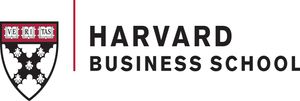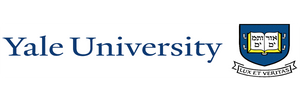- HOME
HOME
- SERVICES
SERVICES
- Study Abroad
Study Abroad
- Study Abroad Counseling
- Parent Counseling
- Test Prep
- College Selection
- Essay Editing And Applications
- Interview Prep
- Post Interview Essay
- Re-applicant Essay
- Resume Review
- Post Result Strategy
- Scholarship Application
- Waitlist Letter
- Letter Of Recommendation (lor)
- Study Abroad Scholarships
- Ibdp Diploma Essays
- Essay Tutorial
- Career Guidance
- Packages
- Faq
- Study In India
- Skill Enhancement
- Study Abroad
- DEGREES
- TESTIMONIALS
- TEAM
- OFFERS
- RESOURCES
RESOURCES
- Free Tools
- Undergrad (8th – 12th Grade)
- Masters
- Mba
- M.phil / Ph.d
M.phil / Ph.d
- Executive Education
Executive Education
- Career Guidance
- Top Global Universities
- Top Mba Programs
- Admission Officers Insights
- EVENTS
EVENTS
- FINANCE YOUR EDUCATION
FINANCE YOUR EDUCATION
- MEDIA
American Nightmare

DESCRIPTION
American Nightmare
AMERICAN NIGHTMARE
Lord Hanuman, please grant me a visa, says one appeal, scribbled in red ink on a sheet of paper. Another simply says, “My daughter, Tanu, desires to study and work in the US.’’ Several such notes are placed all around the idol of Lord Hanuman at the Chamatkari Visawale Hanuman Mandir, situated in a congested street in Neb Sarai in Delhi. Visa aspirants flock to this shrine for divine intervention; the temple is fabled to grant visas to the true believers.
Though visa seekers for all countries come here, the US aspirants outnumber all others put together. Their pleas are only getting more fervent now that the new administration in America has announced a rethink of the H-1B visas under which skilled workers head to the US.
Three private member bills on tweaking the H-1B visas have been tabled in the US Congress and President Donald Trump’s administration has reportedly drafted an executive order to cap these visas, a move ostensibly to ensure that Americans get the first pick of jobs, instead of foreign techies—most of them from India—who take away these jobs at low salaries of around $60,000 a year.
Trump’s intentions have come as a splash of icy water on the dreams of thousands of Indians who had been hoping for a foothold in the land of opportunity. Akanksha Sharma was thrilled after she was short-listed by her firm for a transfer to its US office. She applied for the H-1B visa last May and was twice lucky when her name came through in the random selection (the process by which cleared aspirants are picked). She checked her case status online, and saw that her application had got the “approved’’ tag last month. But the company attorney in the US, who was supposed to get a letter to this effect from the US government, hasn’t got it yet, so her application is in limbo. “Is the delay part of the natural process, or have recent developments put my case on hold?’’ wonders 28-year-old Sharma, a certified professional in learning and performance.
“The entire process of H-1B visa tests your patience in the normal course. There is an element of chance, there is no set parameter for how long one stage takes—it could be days in one case, weeks or even months for another. Now, there is the cloud of the visa itself being revamped,’’ says Sharma.
Sharma at least hasn’t incurred any monetary loss as she waits for Uncle Sam’s invitation. Neil Das is in a tighter spot. Following in the footsteps of his uncle, who went to work in Silicon Valley at the beginning of the dotcom boom in the mid 1990s, and whose journey from H-1B visa to green card to citizenship took just under ten years, Das went to the US for his master’s in engineering, a course that has cost his middle-class parents around Rs 75 lakh. He was hoping to stay back and work, recovering the investment and hopefully, living the American Dream. “He will get an employee authorisation document (EAD) from his college, which will give him two years to work in the US, by when he should acquire a work visa,” says his uncle, Arindam, a California resident. “Given the way things are developing, it seems he’ll be back in India once the EAD lapses.’’
No wonder 21-year-old Shantanu Gupta, a final-year mechanical engineering student at Ramaiah Institute of Technology, Bengaluru, is wary about pursuing his American Dream. “I have applied to some US universities for my master’s. But now I am trying for some universities in Europe. Although the US is a better option for higher studies, I think in the next few years, job opportunities for outsiders will go down there. What is the point in pursuing a master’s if there is no scope for a job,” says Gupta. “The Trump government will make the situation very unpredictable and uncertain for us.”
Ministry of External Affairs spokesperson Vikas Swarup, too, says it is premature to react as the H-1B bills and the executive order have not yet been passed. He says India has conveyed its “interests and concerns to the US administration and the US Congress at senior levels’’. The government has asked the IT industry, which is perceived to be most vulnerable, to put together a dossier on how it will be affected. Commerce and Industry Minister Nirmala Sitharaman held a meeting with top officials from ministries of finance, telecommunication and external affairs, which was also attended by industry representatives. The meeting asked industry bodies to formulate a strategy on how to counter the move that might hit Indian business badly. NASSCOM (National Association of Software and Services Companies) is expected to take up this task.
Despite the mounting challenges, the allure of America remains strong. “I could explore Canada or Europe, but it won’t be the same thing,’’ says Bengaluru-based software engineer D. Sannat. “The US is on top, isn’t it? Everything is the best there, infrastructure, future, and till now, there was stability in government policies, too. Plus, most of us have relatives and friends in the US,’’ he says. Moreover, the variety and number of universities in the US is unmatched, says Vibha Kagzi, founder of ReachIvy, an overseas education consulting firm. “The quality of research at these institutes and the faculty are top class. And there’s a range of employment opportunities, from Silicon Valley for the techies to Wall Street for the financial ones. It’s not just for Indians, the US is the global top destination,” says Kagzi.
However, the promise of quality education without the assurance of a job that will help repay the exorbitant fees sours the dream. America does want Indian (and Chinese) students, whose fees help keep the universities in business. A degree from an American university costs an Indian anything from Rs 80 lakh to Rs 1.2 crore, an amount which many aspirational families scrimp and save. “If you get a job in the US, the loans can be repaid in three to six years. On Indian salaries, it would take up to 20 years,’’ says Kagzi, explaining how capping the H-1B visa will hit Indians.
Sujata Mahajan, who works in a multinational consultancy firm, has been saving for years, hoping to send her son, an engineering student, to the US for that coveted master’s degree. “We had recently been told that some of us could be selected to work in the US office,’’ she says. Mahajan was hoping that she would be able to get her work visa around the same time her son started his master’s course. That, however, was before Trump came to power. “My son is studying electronics and communication engineering, for which the US is the best place, if we are spending so much money. Unless there’s scope of work after college, the dream might remain just that,’’ she says.
The Trump administration wants to make it less lucrative for firms to hire cheap technical labour from foreign shores. One way of doing this is to raise minimum salaries of visa workers from the current $60,000 annually (much below the rates at which Americans are hired) to $1,30,000, so that only the cream is hired on H-1B. Given that most of the tech companies manned by Indian software engineers pay employees around $60-$85,000 a year, this lucrative set-up is in jeopardy.
“The H-1B visa has been exploited in recent years by body-shopping companies from India, who send workers on temporary contracts, then shift them from one outsourced project to another, making a good commission,’’ says Arindam. “There are increasing problems with this visa system—the lottery for selection, the waiting that can stretch for two years and people who are exploiting the provisions. Had Hillary Clinton won, she, too, would have had a challenge, sorting out the work visa-green card mess. I don’t know whether Trump’s way is the right way, but one thing is certain. America does not have qualified locals for these high-skilled jobs, which is why workers are being imported in the first place,’’ Arindam adds.
T.V. Mohandas Pai, who was chief financial officer of Infosys, agrees. “Indian IT companies deliver complex quality projects. The systems of many large global corporations are managed and run by these companies, a critical function the failure of which could disrupt the banking system and paralyse their operations. Many companies are affected because of the lack of IT employees. With rapid shifts in technology, the situation will worsen,” he says. In his view, a hike in the basic salary for H-1B visa holders will result in a massive increase in costs. “Big companies in Silicon Valley are willing to pay above $1,00,000 but they are a small part of the industry; main street America will suffer a lot,” says Pai. The move will also affect American universities, according to J.A. Chowdhary, IT adviser to the government of Andhra Pradesh. “American universities will face a cash flow problem since most of them depend on Asian contributions.”
Ashok Soota, another IT industry veteran, says the Indian IT industry should adapt to the proposed visa changes and move forward. “Every change of regulation has actually turned out to be for the benefit of the Indian industry because we adapted and worked out strategic approaches. By sending fewer, but more experienced and skilled persons abroad, we will drive the movement up the value chain. We will also bridge the gap, if any, in revenues by doing more local hiring.” Lalit Advani, president of Ahmedabad-based consultancy service Visa Central, sees yet another silver lining. He says although the proposed regulations would hurt Indian companies and visa consultants, it would give impetus to schemes like “Make In India”.
ABOUT THE COMPANY
ReachIvy is a premium education and career advisory that helps aspiring students get accepted into top tier educational institutions globally. We have successful admits at MIT, Columbia, Harvard, University of Pennsylvania, London School of Economics, University of Michigan, Oxford, University of Chicago amongst others.
Vibha Kagzi, Founder and CEO, ReachIvy, holds an MBA from Harvard Business School, and a Bachelor of Science from Carnegie Mellon University. She has also pursued courses at the University of California, Berkeley, the London School of Economics and the Indian School of Business.
Our global team of counsellors have also acquired their degrees from premier institutes and are passionate about sharing their experiences with students worldwide.







